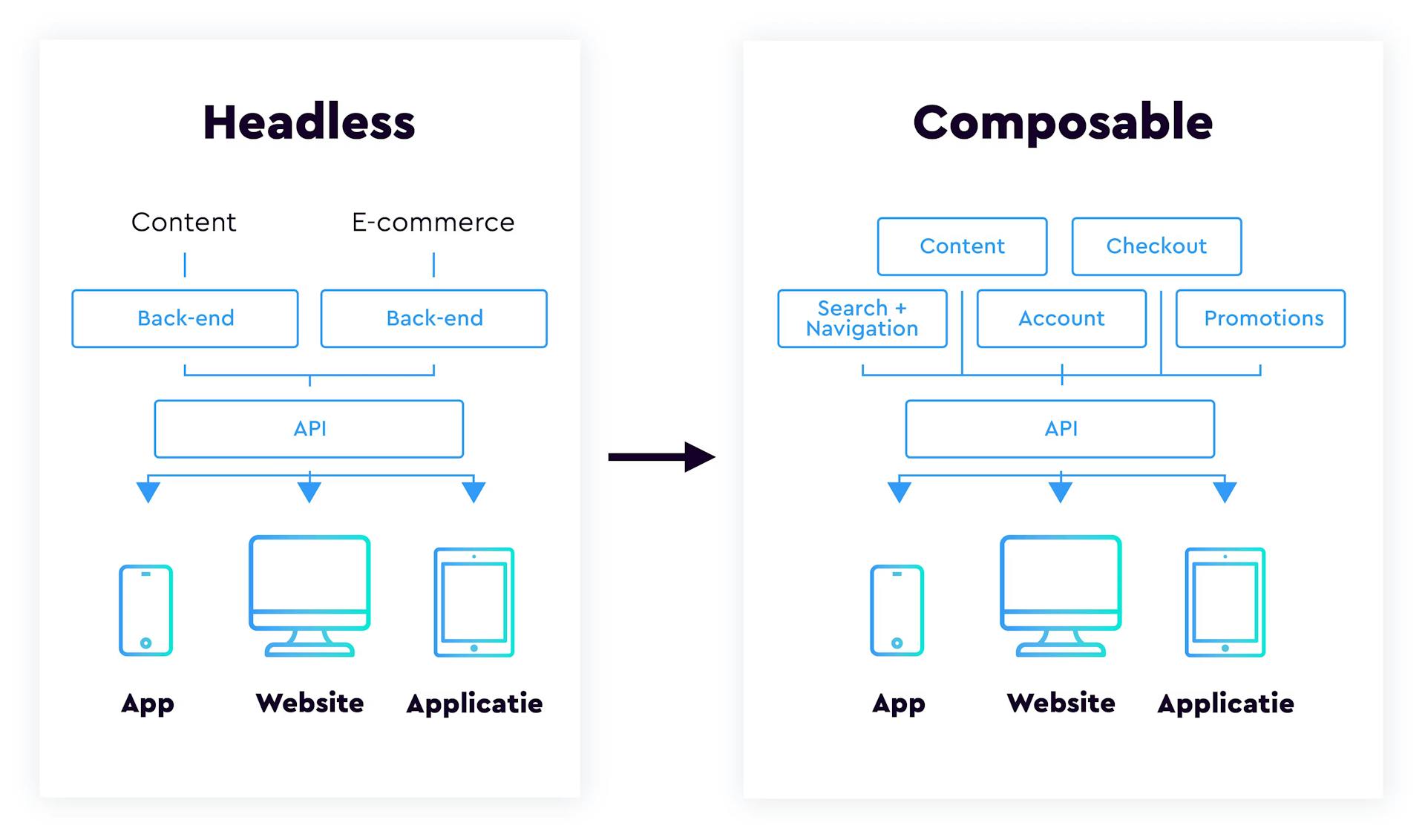Composable commerce: Future music or start now?
In an earlier article we zoomed in on the pros and cons of headless commerce and touched on composable commerce. Developments in the digital commerce landscape are happening in rapid succession; new technologies are emerging and customer and purchasing behavior is evolving. Consumer expectations of online shopping are getting higher and higher. As a brand or retailer, how can you continue to meet these ever-higher digital expectations?
The answer seems to be (right now): composable commerce. What is it, what pros and cons does it bring and how do we see it within XSARUS? You can read about it in this article.
Composable commerce: all loose?
Headless commerce mainly concerns the way the frontend is built. No use is made of the server-side rendered templates of the e-commerce platform, but the frontend is in fact a separate application. Composable commerce goes a bit further: the total e-commerce solution is built from separate components or modules. It's not just about a disconnected CMS system, for example, but really all commerce components can be placed separately from each other. Think of search & navigation, product discovery, promotions & pricing, personalization and my-account solutions. The various tools are all made accessible to the frontend via APIs. Composable commerce thus enables you to choose the gems from among all digital commerce solutions. As a result, the most specific commerce requirements can almost always be met.
The individual composable commerce components are often offered as MACH architectures (Microservices, API-first, Cloud-native and Headless); although this is not strictly a prerequisite, these are the properties you look for in these components. Microservices specify the functional scope, which should be small enough that you can really work with individual cubes. APIs are needed to unlock, preferably to a headless frontend. Cloud-native looks at the delivery model: you don't have to install it yourself and it is adaptive.

Benefits of composable commerce
"Meeting the most specific commerce needs," sounds good. What other benefits do we see?
- Sustainable & future-proof solution
By using stand-alone modules, which are constantly being developed and optimized, composable commerce is a future-proof solution. The providers of the various components are each specialists in their field; you can expect these components to be more capable and better than the modules of the standard e-commerce platform. New components can be linked or replaced. This allows a better and faster response to new developments, without having to rebuild the entire commerce platform. Perhaps this is the last major replatforming project? - Flexible & independent components
Because the customer experience is built from various components, the complete e-commerce system is no longer queried at the moment a visitor performs a search in the webshop or goes through the checkout. Because the system is built from separate components, it provides flexibility and speed. And the code base is less complex, making it easier to implement changes. - Opportunity: differentiate from competition
Why does a customer or consumer choose a particular Web shop? In today's age that is more transparent than ever before, everything revolves around distinctiveness. Composable commerce offers opportunities. Providing the right, compelling information quickly in every channel and on every device creates an optimal customer experience.
Caveats composable commerce
As with virtually all new developments, there are caveats to composable commerce.
- Many different tools
If you want to get the best of all commerce components, you will have to deal with a large number of different tools. This does create some complexity and you must be able to understand the relationship between the tools. What happens to the webshop if I change certain configuration in tool a or b? - Costly
Deploying all these different tools at once is a complex operation and involves the necessary investments. Apart from the implementation costs, you also have to deal with license fees from various sources.
Future music or acting on it now?
To many, composable commerce may sound like something for the future and only feasible for the 'big boys'. But of course it is not the case that all possible components should be deployed composable immediately. As we so often advise: start small!
The commerce platforms Magento Open Source, Adobe Commerce and Shopware, which we are currently implementing at many of our clients, lend themselves well to getting started with a composable setup thanks to their API accesses. Combine a number of important functions of such a platform, at least the checkout, with a standalone CMS and a search component, realize a headless frontend and you are actually already composable to start with. Thus, in the future you can replace more and more components from the standard e-commerce platform - where necessary - with tools that better suit your needs.

